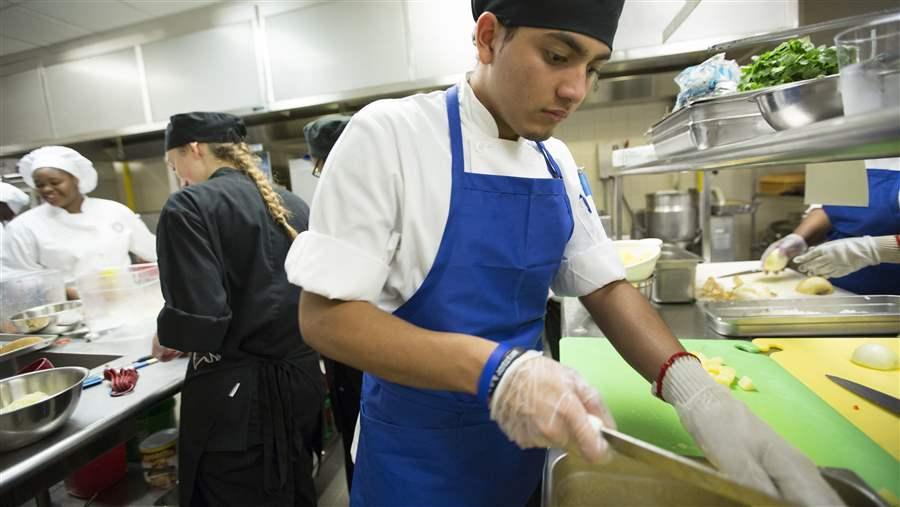Neighborhoods and Districts Benefit From Expanded Access to School Kitchens
Making facilities available to the public promotes health, community engagement
Overview
As school districts nationwide serve more nutritious foods to students, cafeterias have become classrooms that help children to develop healthy eating habits for a lifetime. Lunchrooms also serve as gathering places for parent-teacher organizations and student groups. And schools across the country are making their kitchen facilities available to the public for activities that promote health and community engagement, such as cooking classes, business incubation, and food storage for after-school events.
Such arrangements, often called shared use or community use, can be formalized with written, legal documents or can be more ad hoc, based on unofficial agreements.1 In many school districts, community use of school recreational spaces to promote physical activity, such as school athletic fields and courts, is commonplace,2 but residents, nonprofit organizations, and educators have only recently adopted this approach for school kitchens.
The expanded use of school kitchens can benefit school districts and their communities by improving access to, knowledge of, and the ability to prepare healthy foods; helping to process and store fresh produce from community gardens; and even supporting local entrepreneurship. Perhaps most importantly, however, opening school kitchens to the public helps build relationships: When school nutrition staff members work with the community, residents in turn support the school.
To better understand the factors that facilitate—or obstruct—community use of school kitchens, the Kids’ Safe and Healthful Foods Project, a collaborative initiative of The Pew Charitable Trusts and the Robert Wood Johnson Foundation, commissioned a legal and policy analysis of such arrangements around the country. Researchers interviewed four food service directors and six community members (including local groups, nonprofit organizations, and for-profit businesses) and conducted in-depth analyses of policies in California, Indiana, Massachusetts, South Carolina, and Texas to illuminate the legal and regulatory frameworks that govern the sharing of school kitchen facilities. This brief presents the findings of that study to help school districts and community members make informed decisions about opening their own school kitchens for public use.
Goals of community partnerships
Nutrition education
Cooking classes and nutrition education provide students and families with skills and training in preparation techniques and equipment use. Common Threads, a national nonprofit, partnered with 175 schools during school year 2015–16 in cities across the country to provide such classes for elementary and middle school students and their parents in school kitchens. Trained chef instructors and community volunteers teach participants to follow recipes and prepare low-cost, healthy meals with the goal of increasing the knowledge and skills needed to develop lifelong healthy eating behaviors.
Healthy food access
Schools can help local community garden projects gather their harvest by providing convenient facilities for cleaning and storing fruits and vegetables. In partnership with Lowell Public Schools in Massachusetts, Mill City Grows, a local nonprofit, has built five community and 15 school gardens to help ensure access to fresh, healthy food in underserved neighborhoods. To teach children how to properly and safely prepare the food grown in these gardens, the organization began offering after-school classes in the district’s kitchens in 2013. Using the school’s sinks, knives, and cutting boards, staff members teach children about food safety by instructing them how to properly wash and prepare fresh produce.
Small-business support
School kitchens provide food entrepreneurs with access to commercial equipment for an affordable rental fee. Building on the kitchen access that the Oakland Unified School District in California already offers to community groups, Nutrition Services Director Jennifer LeBarre plans to invite culinary startups to use district facilities and to make at least one school kitchen in East Oakland available on evenings and weekends. “There are many people trying to do startup businesses in that area, but they lack access to a commercial kitchen,” said LeBarre. “After 3 p.m., the majority of our kitchens are empty, so it could really work for the needs of the community.”
School and community engagement
Opening school kitchens helps build relationships with the community. In Indiana, Warrick County School Corp. Food and Nutrition Director Shenae Rowe opens the kitchens to community groups such as the Women’s Club of Newburgh. The group hosts an annual arts and crafts show at Castle High School featuring foods that volunteers prepare in the kitchen. The club uses proceeds from the event to support educational opportunities, such as college scholarships for seniors at the county’s high schools.
Opening up our school kitchens for fundraisers allows us to help our parent-teacher organization, but in turn, the PTO helps our school meals program through their support.Shenae Rowe, food and nutrition director, Warrick County School Corp., Indiana
Before entering into an agreement
School districts can help ensure successful agreements if they match users to the most appropriate facilities by considering who will be using kitchen resources and what equipment, space, and amenities the different groups require.
Users
Our interviews revealed that three main groups use school kitchen facilities to convene events, workshops, or social gatherings:
- Community groups (church groups, parent-teacher organizations, sports teams, and other extracurricular student groups) are the most common type of public users. Their events often involve basic food preparation and service and may require considerable dining space to accommodate participants.
- Nonprofits (after-school cooking classes, culinary workshops, and vocational trainings) may need access to larger pieces of cooking equipment, such as combination ovens and standing mixers. Depending on the size of the classes, these users may not need access to the dining space.
- For-profit businesses (local catering companies or culinary startups) or individuals typically need access to commercial cooking equipment to prepare food and are more likely to be familiar with the functions of the kitchen.
Kitchens
More than 90,000 schools participate in the National School Lunch Program (NSLP),3 which requires that kitchen facilities be equipped to serve food that meets the program’s nutrition and food safety standards. School kitchen designs can vary depending on the needs of the district, but in general this analysis found three distinct types:
- Production facilities have the equipment, space, and capacity to order, receive, prepare, and serve food and are suitable to accommodate most public users.
- Central kitchens prepare and cook food for multiple schools within a district and usually have larger storage areas and more types of equipment than production facilities but typically do not have dining areas. Central kitchens are appropriate for for-profit and community users who do not require food service space. The times available for public use may be limited, because meeting the district’s needs generally requires longer hours of operation for these facilities than for those serving a single school.
- Satellite facilities receive food prepared in central kitchens. They are equipped mainly to reheat or finish meals and may lack the tools and appliances necessary for users who want to prepare food from scratch. With their basic equipment and spaces for serving and dining, these kitchens are often well-suited to cooking demonstrations and community events.
Legal and regulatory matters regarding sharing school kitchens
Regardless of the type of user or school kitchen involved, districts and community users must be aware of important legal and regulatory considerations before entering into a shared use agreement. Although state and local jurisdictions have distinct requirements, this study identified several common themes:
Food safety
School nutrition staff and public users must ensure that food is prepared safely and that shared use of kitchens does not endanger users or schoolchildren. Districts that participate in the NSLP are required, among other things, to have food safety programs and participate in health inspections by state or local health departments at least twice annually.4 School food safety plans must comply with U.S. Department of Agriculture guidance and hazard analysis and critical control point principles and apply those to any location where school nutrition program food is stored, prepared, or served.5 However, regardless of a school’s NSLP participation, districts typically have policies and procedures to prevent allergens from contaminating other food.6
Because community members use the same facilities in which school meals are prepared, they also must adhere to a district’s food safety plan. As long as the same policies and procedures in place for service staff are applied to community users, school nutrition directors can be assured that opening kitchens for community use will not create new legal responsibilities for the district with regard to food safety.
Liability
School districts have various options for liability protection in the event a community member is injured while using school kitchen facilities. In general, districts are unlikely to be held liable unless an employee acted negligently. Even then, the district may have a defense against the liability in the form of “governmental immunity,” although laws regarding injury claims that establish this precedent differ considerably across states.7 All five states included in this analysis had some form of governmental immunity, but the strength of those provisions varies. Texas school districts enjoy the broadest protections, which are waived only under specific circumstances, none of which apply to public use of school kitchens.8 In contrast, Massachusetts districts have immunity only if a school employee harms someone by performing an action that was not within the scope of the employee’s employment.9
School districts in some states, including all five surveyed, may have additional protection under “recreational use” statutes, which offer immunity from certain claims against landowners who open their property to the public for recreational use.10 In states with broad recreational use statutes, such as Indiana, opening school kitchen facilities could be considered a protected activity under the law, depending on the circumstances of the use and other factors.11 However, in Massachusetts, protection for recreational activities extends only to purposes that are “scientific, educational, environmental, ecological, research, religious, or charitable,”12 so the state’s statute might not apply when districts allow for-profit groups to use school kitchens. Districts should be aware of the legal protections that exist in their state and understand how those protections apply to opening school kitchen facilities to different types of users.
Districts can further lessen their exposure by instituting risk management programs that ensure the safety of school personnel, students, and visitors; by seeking protection through insurance; and by putting language into shared use agreements requiring the user to assume all or part of the liability in the event of injury or property damage. In California, school districts are required to obtain insurance against liability for death, personal injury, or property loss or damage.13 Some districts in California also include in their policies specific coverage for after-school hours or for school meal program employees.
Oversight
Having a designated school nutrition professional present during community use of the kitchen helps ensure that all food safety requirements are met and that the facilities are fit for the next meal service. The U.S. Food and Drug Administration considers school kitchens “food establishments” because they prepare, produce, or sell food,14 which means they must comply with federal and state regulations for serving food. Although state regulations may vary, all five surveyed states require that a member of the school nutrition staff be designated as the “person in charge” and pass a food safety exam from an accredited certification program.15 This person is responsible for supervising people in the kitchen, whether school staff or community members, to ensure that they comply with all state and local regulations.
States differ on whether this supervisor must be present in the kitchen during all hours of operation. In California, the person in charge may designate another member of the school nutrition staff to be on site when the kitchen is in use, as long as the supervisor ensures that all employees have adequate knowledge of the applicable food safety requirements.16 In South Carolina and Texas, however, the designated person must be present at all times.17
School kitchen users in all five states pay the costs associated with having a designated person on site, whether as part of a shared use rental fee or as a separate expense. At Dorchester County School District 2 in Summerville, South Carolina, for instance, Nutrition and Food Service Director Debi Filomarino ensures that users are aware that her district charges $30 an hour for a member of her staff to supervise the kitchen outside regular school hours.
However, some districts will lower or waive such fees for community groups or nonprofits. When a local choir wanted to host a fundraising dinner at a Warrick County school in Indiana, school nutrition staff members who had children or grandchildren in the choir or had been in the choir themselves volunteered their time for the event.
Equipment use
The USDA allows kitchen equipment purchased with its grant funds to be leased for purposes other than school meal service as long as the district charges users a “fair market rate.”18 This rental fee is based on the cost of comparable equipment; market conditions in the area; the type, life expectancy, condition, and value of the equipment; and other factors.19 Each district should review its rental arrangement periodically to ensure that the rate reflects the current local market.20
Building relationships by inviting the community into the kitchens with our staff is important. If a student’s parent knows that she can count on the cafeteria manager to answer some of her questions, that strengthens the relationship and opens doors.Debi Filomarino, nutrition and food service director, Dorchester County School District 2, South Carolina
Strategies for successful school kitchen partnerships
Carefully written and well-implemented policies with clear objectives help shared use practices serve school districts and community members more effectively.
Set goals
Public access to school kitchens should facilitate the types of use the district and local community want. Policies should therefore reflect an assessment of community needs and district goals. For example, in an area where commercial-style kitchens are scarce, the community may want to use school kitchens to help small businesses, as in Oakland, California. Similarly, a district policy may be tailored to meet the needs of nonprofit groups that primarily use the kitchen for cooking classes with students. In that case, district policy may require a member of the group to complete certain food safety certifications in order to assist the school nutrition supervisor. Further, although none of the districts interviewed for this study had strict guidelines governing the types of foods that could be served in their kitchens, schools may create policies that favor community groups that complement the district’s health and wellness vision. Decisions about the details of a shared use policy should be made at the local level and reflect an understanding of community needs and capacity.
Find a champion
Many partnerships are started by someone within the school who helps establish trust between nutrition staff and potential community users. For example, at a middle school in Lowell, Massachusetts, a school cafeteria manager championed public use efforts. “Once a week, we were bringing in a blender and plug-in tabletop range to teach cooking classes to students after school,” said Francey Slater of the nonprofit Mill City Grows. The cafeteria manager noticed and encouraged the Mill City Grows staff to use the kitchen instead. “That was really the beginning of our partnership. The cafeteria manager was observant, present, and interested in getting involved and offering the resource of her kitchen to this group,” said Slater.
Create a policy and outline fees
Having a policy in place that clearly outlines the district’s goals, roles, and responsibilities can help mitigate staff and community concerns and ensure successful partnerships. Districts generally have the authority to determine whether they want to rent out their facilities and can create policies that explicitly address school kitchens and cafeterias. Schools should make their rental policies easily accessible to the public, for example on the district’s website, and should promote the availability of kitchens at school functions and community events.
Guidelines should cover rental fees, insurance requirements, and other rules to ensure safe and appropriate use of the facilities and should describe what types of events can be held and any restrictions on equipment use. In general, districts set fees to use the kitchen facilities, which may include compensating school nutrition staff and maintenance personnel for time worked outside their standard hours. In the five surveyed states, use fees differ significantly across districts.
Public use of school kitchens also can generate revenue that can be invested back into student meal programs.21 Some districts adjust the rental price depending on the category of user. For example, in Willis Independent School District in Texas, school organizations such as parent-teacher groups and booster clubs, as well as local community groups such as Boy and Girl Scouts, are exempt from rental fees and pay only for supervision, security, and cleanup costs, while all other groups must pay $50 an hour to rent a school kitchen.22
Cover the essentials
A review of policies from districts across the country showed that the strongest tended to include the following:
- Any outside use of the kitchen facility must not interfere with operation of school meal programs.
- A kitchen manager or food and nutrition service employee must be present at all times to ensure that food safety and sanitation regulations are followed and that equipment is used safely and correctly.
- Kitchen use must be prioritized according to the districts’ staff capacity to effectively manage the number of requests and meet the needs of all interested parties.
- Handling or contamination of school food used for student meals is prohibited.
- Reasonable fees, liability, and insurance requirements are outlined.
- The contact information of relevant school offices, including the district’s nutrition department, is listed.
- A checklist either within, or in addition to, written policies ensures that all users adhere to required procedures.
Conclusion
Sharing school kitchens benefits districts and communities by promoting nutrition education and school engagement and supporting small businesses. Although partnerships vary depending on the needs of the district and local users, common practices from around the country can help alleviate any concerns about expanding access to school facilities. Effective agreements enable partners to overcome barriers and establish clear terms for sharing of responsibilities and costs.
Appendix
Many school districts and community users rely on a combination of federal and local funding, as well as various partnerships, to offset costs associated with shared use of school kitchens. Natural collaborations include farm-to-school programs and after-school activities, such as nutrition education and student cooking classes. These partnerships also provide a range of funding opportunities, and many grants are broad enough to include support for the fees associated with public use of school kitchens. Government-sponsored school- or student-focused nutrition education funding is available, as well as targeted private grants and partnerships with nonprofits and businesses. (See Table A.1.)
Table A.1: Examples of Programming Grants and Potential Partner Organizations
| Name | Type | Description |
| U.S. Department of Agriculture Farm to School Grant Program |
Federal | Funding assistance to eligible schools to implement farm-to-school programs that improve access to local foods. |
| U.S. Department of Education 21st Century Community Learning Centers |
Federal | Funding assistance to eligible schools for academic enrichment opportunities for students during nonschool hours. |
| United Fresh Start Foundation | Nonprofit, national | Funding assistance to support programs, events, and activities that focus on increasing children’s access to fresh fruits and vegetables. |
| FoodCorps | Nonprofit, national | Connects children to healthy food in school. Members lead hands-on gardening and cooking lessons in partnership with school districts. |
| Whole Kids Foundation | Nonprofit, national | Funding assistance to provide children with healthy food choices through partnerships with schools, educators, and organizations. |
| Hospitals, businesses, and community-based organizations |
Local | May provide volunteers or donations to support shared use. |
Sources: U.S. Department of Agriculture, Food and Nutrition Service, “Community Food Systems Farm to School Grant Program,” accessed Jan. 26, 2017, https://www.fns.usda.gov/farmtoschool/farm-school-grant-program; U.S. Department of Education, “21st Century Community Learning Centers,” accessed Jan. 26, 2017, https://www2.ed.gov/programs/21stcclc/index.html; United Fresh Start Foundation, “Community Grants Program,” accessed March 22, 2017, http://www.unitedfreshstart.org/what-we-do/community-grants-program; FoodCorps, “Mission and Program,” accessed Jan. 26, 2017, https://foodcorps.org/about/; and Whole Kids Foundation, “Grant Programs,” accessed May 3, 2017, https://www.wholekidsfoundation.org/landing-pages/grants-landing-page. (© 2017 The Pew Charitable Trusts)
External reviewer
The brief benefited from the insights and expertise of external peer reviewer Aleshia Hall-Campbell, Ph.D., M.P.H., acting executive director of the Institute of Child Nutrition at the University of Mississippi. Although she reviewed the study’s findings and methodology, neither she nor her organization necessarily endorses the conclusions.
Acknowledgments
The Kids’ Safe and Healthful Foods Project would like to thank the school nutrition directors and community members for their generous assistance with this research. Thanks also to the staff of ChangeLab Solutions, including Ben Winig, Alexis Etow, Saneta deVuono-Powell, and Sara Bartel, for conducting the interviews and legal research. The project is also grateful to current and former Pew colleagues Jessica Donze Black, Sara Brinda, Jennifer V. Doctors, Kyle Kinner, Matt Mulkey, and Danielle Ruckert for their assistance with production of this brief.
Endnotes
- ChangeLab Solutions, “What Is Shared Use?” accessed Jan. 27, 2017, http://www.changelabsolutions.org/unlocking-possibilities.
- ChangeLab Solutions, Playing Smart: Maximizing the Potential of School and Community Property Through Joint Use Agreements (2012), http://www.changelabsolutions.org/sites/default/files/Playing_Smart-National_Joint_Use_Toolkit_Updated_20120517_0.pdf.
- National Center for Education Statistics, “Schools and Staffing Survey (SASS) 2011-2012,” accessed Jan. 26, 2017, http://nces.ed.gov/surveys/sass/tables/sass1112_2013312_s12n_001.asp.
- 42 U.S.C. §1758(h)(1)(A).
- “Hazard Analysis and Critical Control Point Principles and Application Guidelines,” Journal of Food Protection 61, no. 9 (1998): 1246–1259, http://dx.doi.org/10.4315/0362-028x-61.9.1246; 42 U.S.C. §1758(h)(5)(A). Hazard analysis and critical control point principles serve as a systematic approach to identify, evaluate, and control food safety hazards by focusing on each step of the preparation process.
- 21 U.S.C. §2205(b).
- National Conference of State Legislatures, “State Sovereign Immunity and Tort Liability,” accessed April 20, 2017, http://www.ncsl.org/research/transportation/state-sovereign-immunity-and-tort-liability.aspx.
- Tex. Educ. Code Ann. §22.0511; Tex. Civ. Prac. & Rem. Code Ann. §§101.025, 101.051.
- Mass. Gen. Law. Ann. ch. 258, §10(b).
- National Agricultural Law Center, “States’ Recreational Use Statutes,” accessed April 20, 2017, http://nationalaglawcenter.org/state-compilations/recreational-use/.
- Ind. Code Ann. §34-31-10.
- Mass. Gen. Laws. Ann. Ch. 21 §17C.
- Cal. Educ. Code §35208.
- U.S. Food and Drug Administration Food Code 1999. Ch. 1 §201.10(B)(31).
- 105 Mass. Code Regs. § 590.003(A)FC2-101.11; 25 Tex. Admin. Code § 228.31 (2016); Ind. Code Ann. § 16-42-5.2-8; S.C. Code Ann. Regs. § 61-25.2-103.11 (2016); Cal. Retail Food Code Part 7, §113945. South Carolina, Massachusetts, Indiana, and Texas require the designated person in charge to be a certified food protection manager. See 25 S.C. Code Ann. Regs. § 61-25.2-101; 105 Mass. Code Regs. §590.003(A)(2); Ind. Code Ann. § 16-42-5; Tex. Admin. Code §229.176. Texas goes a step further and also requires “all food employees to complete an accredited food handler training course … within 60 days of employment.” See 25 Tex. Admin. Code § 228.33(e).
- Cal. Retail Food Code §§ 113700, 113945.
- 25 Tex. Admin. Code § 228.31; S.C. Code Ann. Regs. § 61-25.2-101.
- 7 C.F.R. § 210; 2 C.F.R.§§ 200.307, 200.313.
- 2 C.F.R. § 200.465.
- Ibid.
- 7 C.F.R. § 210.9 and § 210.14. School districts that participate in the NSLP must maintain a nonprofit school food service program, and any additional income must be invested back into the program. School districts must limit net cash resources to an amount that does not exceed three months of average expenditures or that is set by the state child nutrition agency.
- Willis Independent School District, “Facility Use Procedures,” accessed Jan. 16, 2017, http://www.willisisd.org/apps/pages/index.jsp?uREC_ID=171702&type=d&pREC_ID=353595.


America’s Overdose Crisis
Sign up for our five-email course explaining the overdose crisis in America, the state of treatment access, and ways to improve care
Sign up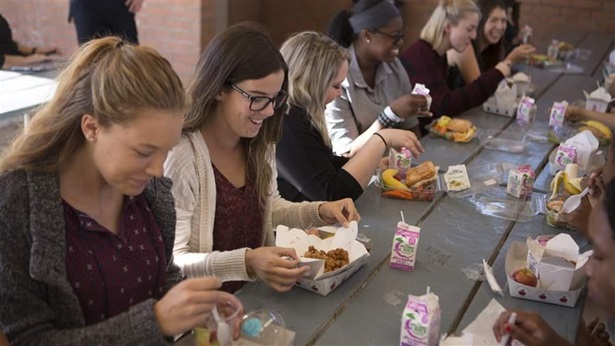
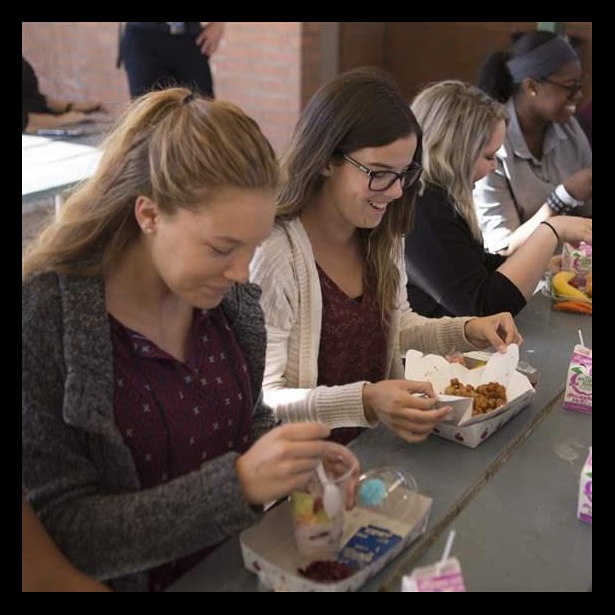
How Schools Are Getting Kids to Eat Healthy Foods
New report reveals strategies for successful meal programs
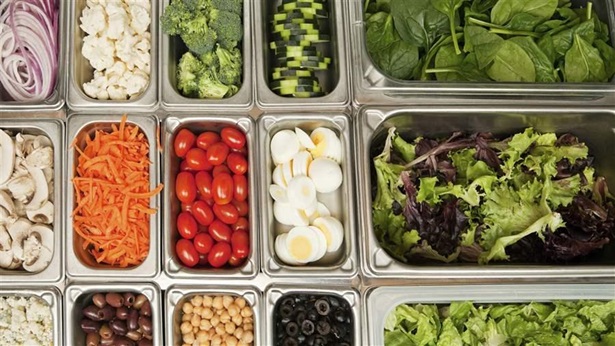
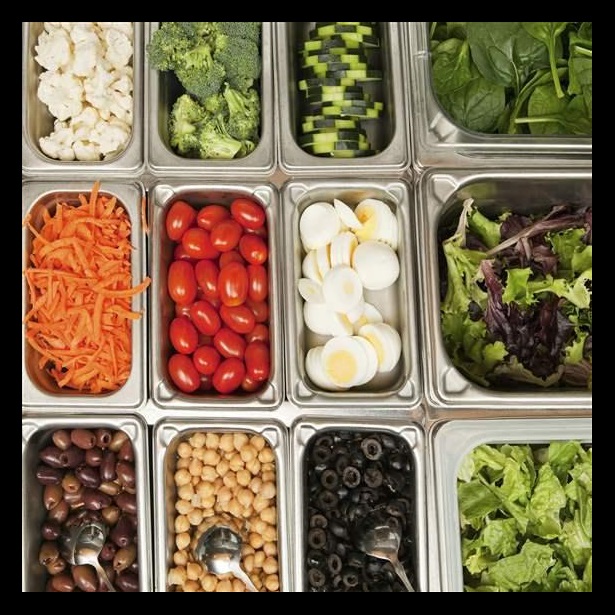
School Nutrition Gets a Boost From USDA Kitchen Equipment Grants
School Nutrition Gets a Boost From USDA Kitchen Equipment Grants
Learn More